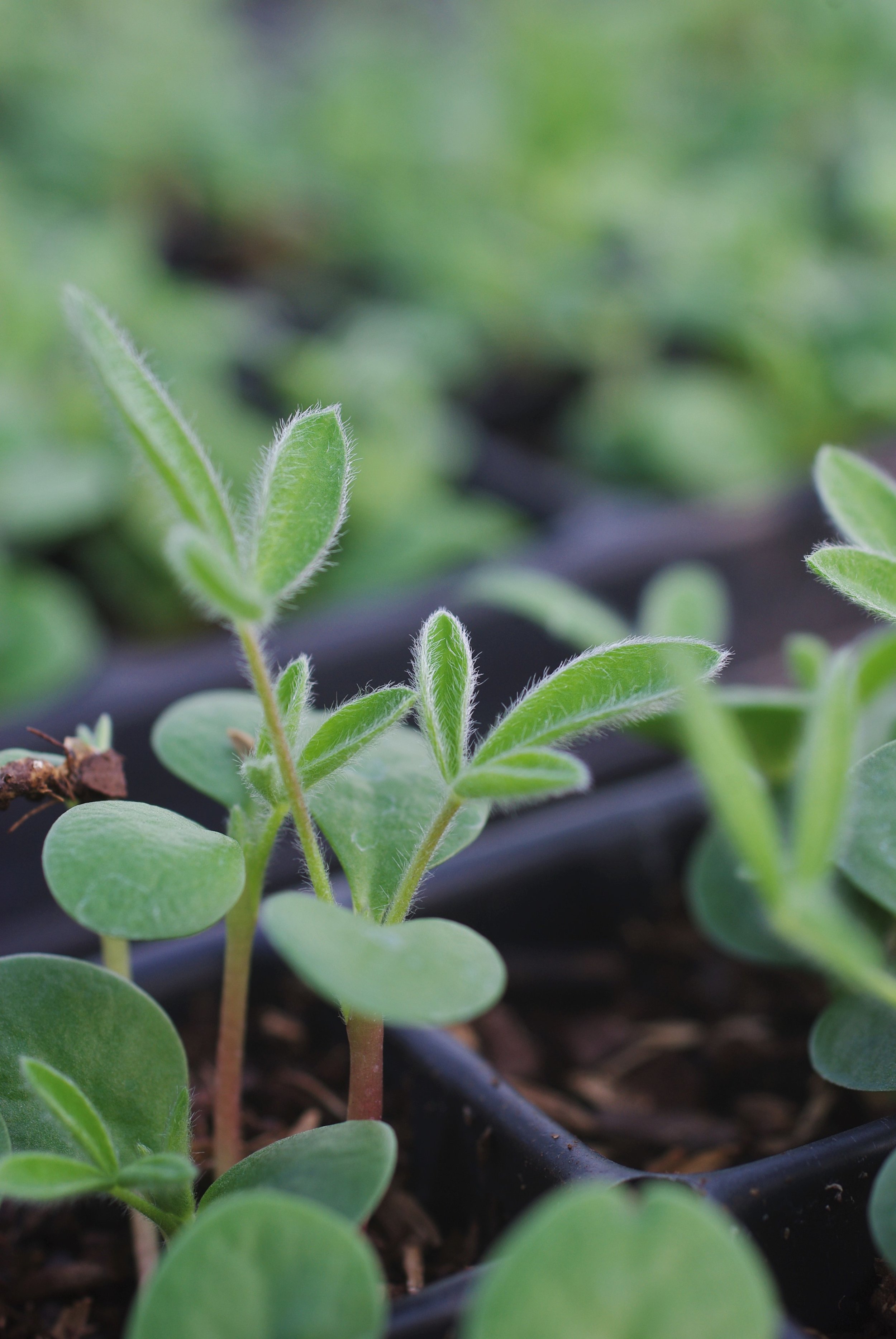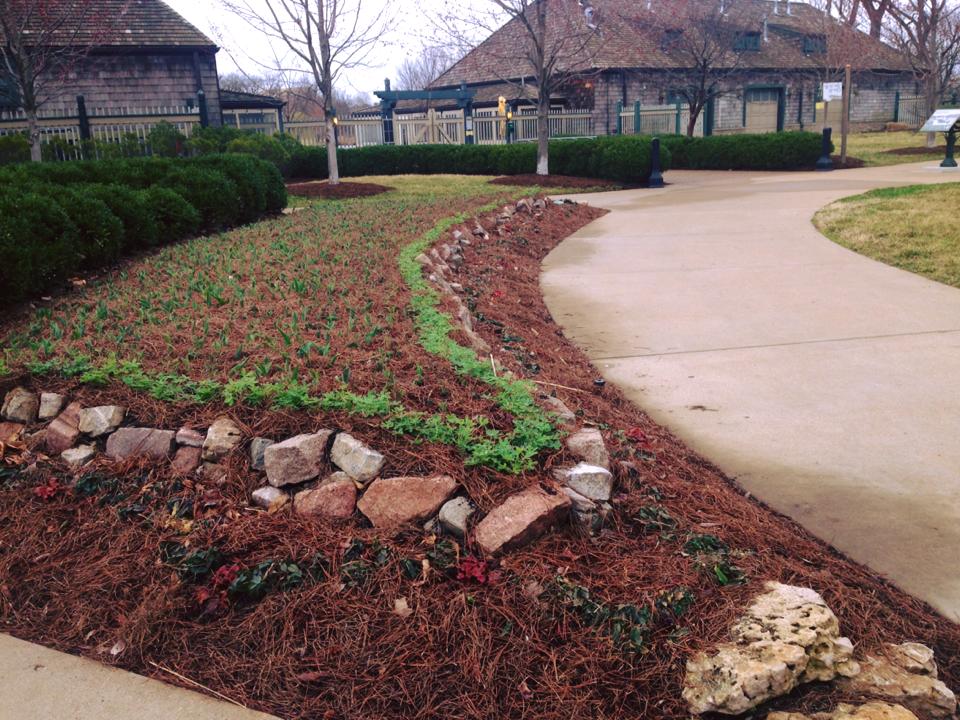Horticulture Notes: Growing Texas Bluebonnets
Did you get a chance this past spring to see our Boathouse display featuring Ladybird Johnson Royal Blue bluebonnets (Luinus texensis)? As a horticulturist, I thrive on a challenge — and growing out these lupines this past winter and spring presented me with just that: “How do I manage to grow Texas bluebonnets in St. Louis?”
The idea to include these lupines started with my ever-persistent curiosity to try new and unusual plants in our displays at the Boathouse. If you have ever seen a photo of the fields in Texas carpeted in the blue flowers of Texas bluebonnets, you, like me, might have wished we could achieve the same effect here in St. Louis. But alas, our winters are too cold and our soils too heavy to truly experience bluebonnets in all their glory. But, never say never, because it is possible to grow Texas bluebonnets in St. Louis — it just takes more effort than sitting back and letting Mother Nature do her thing. We took up this challenge this past spring, and as it turns out, it was easier than we first thought.
As I have mentioned in previous blog posts, the goals of my flower displays can be summed up under the title of “persuasive gardening.” Continuing the tradition of horticulturists like John Moritz (who was a horticulturist for Forest Park in the early 1900s), the gardens in front of the Boathouse are meant to inspire citizen gardeners throughout St. Louis. As a side note, did you know that in 1916 John Moritz started a horticulture education exhibit in one of the greenhouses in Forest Park? His goal was to demonstrate plants that grew well in our climate. As visitors, we come to the Park to relax and enjoy, but we also come to learn. Just as you can learn about polar bears at the Saint Louis Zoo, you can also learn about and observe gardening with annual flowers at the Boathouse.
Starting the seeds Indoors
In Texas, bluebonnet seeds typically begin germinating in the fall. These seedlings grow slowly at first, with cooler temperatures on the horizon. But once temperatures start to warm in the spring they begin to bolt, growing 1-1.5" tall and carpeting the fields in Texas in blue from early March into May. Although bluebonnets can tolerate frost — and even temperatures as low as 20° — they are only hardy to USDA Hardiness Zone 8 (10-15° at the coldest). Our winters are often at or below this temperature (Hardiness Zone 6), and therefore it was not possible for us to directly seed the bluebonnets into our landscape bed this past fall. With advice from Larry Parsons at Texas A & M University and through a partnering with Joe Clinton, the manager at City greenhouses, we started the process of growing out these seedlings indoors. Starting on January 5, we soaked the seeds overnight and inoculated them with the appropriate strain of bacteria that helps produce nitrogen in a useable form for the plants. We were able to reuse pots and trays from the previous year. Sanitation is key when growing plants in a greenhouse setting. Soil-borne diseases can carry over from year to year affecting the success of plantings if the proper sanitation steps are not completed. After planting, the seeds germinated within a few days, and by day 10, the first true leaves had emerged.
Planting outdoors
With the help of our Forest Park Forever volunteers, we shifted up the seedlings to quart pots in on February 3. Once the temperatures inside the greenhouse began to rise, the seedlings started to take off. By March 4, the seedlings were ready to be taken outdoors.
Due to cold temperatures the first few weeks, it was necessary to cover the Bluebonnets each evening with row cover fabric if the temperatures dipped below 35°. After a week and a half of hardening off, we planted them in the bed, hoping warm spring temperatures would shortly follow. Once the bluebonnets were fully hardened off, they withstood multiple frosty mornings at freezing temperatures. Although slow to take off, by mid-April, they were blooming in tandem with the Phlox divaricata ‘Blue Moon.’ In our trial this spring, it took roughly 90-100 days from planting the seeds to first flower.
Long-Lasting Flowers
Blooming for at least a month, the plants we had given to our volunteers to plant at home lasted well into June (when the weather turned hot). They tolerated many different garden sites, including planters at the Boathouse. After they go to seed, they gradually diminish as temperatures rise. Typically our tulips are done before the first week of May and we don’t usually plant up our summer annuals until the second or third week. It was so nice this year to have flowers blooming in our display for Mother's day!
A special thanks to Larry Parsons with Texas A & M Extension, Joe Clinton, manager of the City of St. Louis greenhouses, and our wonderful volunteers who graciously came in February to transplant and move the Texas bluebonnet seedlings to larger containers. It was a team effort, but a successful one! Stay tuned for our upcoming spring 2017 display which will feature not only beautiful bulbs, but new horticulture practices that can be easily used in your garden at home.
Patrick Greenwald is a Horticulturist with Forest Park Forever.









